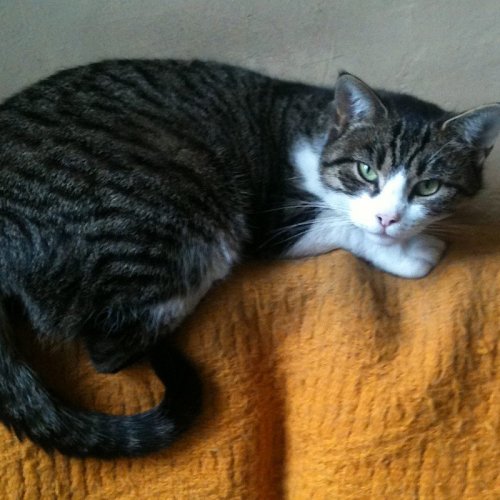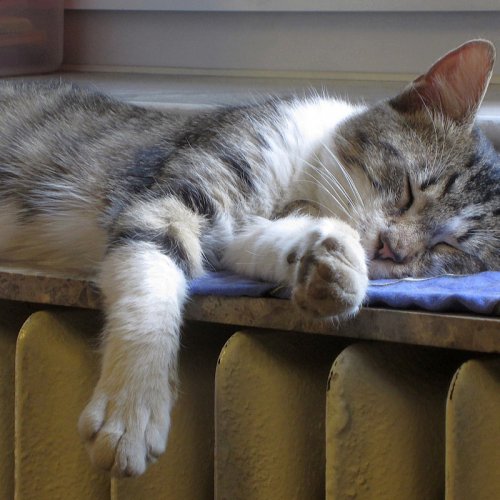THE FLEA’T IS ON!
How turning on the central heating can give pet owners a nasty BITE: toasty homes create ‘perfect breeding ground’ for FLEAS, expert warns.
As winter descends upon us, a warm home is one of life’s simplest of pleasures.
As the idiom goes – there’s no pleasure without pain, unfortunately. While cranking up the central heating makes for a cosy home, it also attracts unwanted visitors.
Nearly two thirds (62 per cent) of British pet owners with a cat or dog are unaware that turning the heating on in autumn can increase the likelihood of flea outbreaks in the home according to new research.
Flea pupae – cocoons in which fleas encase themselves in – are more likely to hatch in the home in warmer conditions.
The study of 2000 British pet owners with cats and dogs revealed 57 percent heat their homes between 21 – 26°C over the winter months – a “perfect breeding ground for fleas” according to resident vet, Zoe Costigan, from pet wellbeing firm Itchpet.com.
“Fleas are often considered a summer problem for our pets, but the reality is that they are very much a year-round problem in our homes, with eggs hatching once the central heating is turned on.
“Better quality central heating and insulation around the home, has improved the conditions for fleas to thrive.
“Fleas can complete their life cycle in less than three weeks at 29°C, so as long as the temperature doesn’t top 30°C, the warmer the house is the faster they will reproduce up to that point.” added Costigan.
The research uncovered that a quarter (26 per cent) of canine owners in contrast to just one in five (18 per cent) cat owners have noticed fleas on their pets during the winter months.
Which could be attributed to more dog owners admitting (36 per cent) they are more relaxed about treating their four-legged friends in winter than cat owners (22 per cent).
The majority of fleas can be found in pets bedding (55 percent), carpets (52 per cent), bedding (33 percent and soft furnishings (29 percent).
The results also found a significant disparity between male and female pet owners when it comes to being clued up about parasites.
>More than double the amount of male pet owners (24 per cent) were unaware their pet had fleas until a vet showed them in contrast to just 7 per cent of women.
One in five (21 per cent) men also admitted that they would not immediately recognise a flea, compared to only 5 per cent of women.
Worryingly, the study also revealed a third (32 per cent) of pet owners would consider just treating their pets for parasites when they have fleas.
Charlotte Harper, co-founder of pet wellbeing firm, Itchpet.com said “With forecasters predicting one of the coldest winters on record, the heat is definitely on to contain pesky parasites.
“Fleas are a nightmare for our pets. They’re not only a discomfort, but can cause inflammation and severe pain as well as acting as a carrier for other parasites such as tapeworm. It is so much easier to prevent an infestation than treat one.”
How to spot a flea outbreak according to vet Zoe Costigan at Itchpet.com
Excessive Scratching – Have you noticed your cat or dog scratching more than usual?
This is typically a strong sign that your pet is hosting some unwanted parasites. Also look out for constant licking and biting too.
Fleas are normally reddy-brown and about 2mm long. In cats, fleas most commonly live around the head and neck.
Check here as well as on its back and belly. Fleas on dogs on the other hand tend to target their lower back, chest, belly and legs.
Look out for black specs on your pet’s skin – these fine droppings are ‘flea dirt’ or flea faeces.
Fleas prefer to live on your pet, but they can also take up residence on you. If the population grows, fleas can branch out and begin living in carpets, rugs, bedding and upholstered furniture.
If you suspect an infestation, try walking on your carpet wearing white socks. Look at your soles afterwards. If you see tiny black bugs, those are likely fleas.
Fleabites on people are pretty distinctive. Most commonly found around the legs or ankle, they look like small red bumps in clusters of three or four. You may also notice a red “halo” around the bite centre.
Take care and be observant. Get in touch if you think you have a problem.









